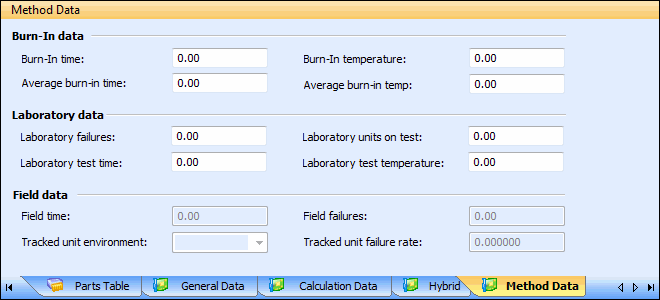Method Data Pane (Assembly)
As described in Telcordia Calculation Methods, you can use these calculation methods to adjust an assembly’s predicted base failure rate by supplying burn-in, laboratory, and/or field data in its Method Data pane. You can use Telcordia calculation methods with all but the FIDES, IEC TR 62380, and RDF 2000 models.

Method Data Pane for an Assembly When ‘Method II Case L4’ is Selected
The Method Data pane for an assembly is shown only if you take one of the following actions in its Calculation Data pane.
• You select a Telcordia or Bellcore model for Calculation model. In this case, a Telcordia calculation method must be selected for Method. For any Telcordia or Bellcore model, (No Method) is an invalid choice. The method selected controls which fields are available in the Method Data pane. For more information, see Method Fields for Assemblies.
• You select any model other than a FIDES, IEC TR 62380, or RDF 2000 model for Calculation model and then select a Telcordia calculation method for Method. If you later select (No Method), the Method Data pane is hidden, and any burn-in, laboratory, and/or field data that you might have entered is ignored.
Assume that you want to use the MIL-HDBK-217 FN2 model and adjusts its base failure rate predictions for assemblies with the Method II Case L4 Telcordia calculation method. In the Calculation Data pane for the top-most assembly, you would select MIL-HDBK-217 FN2 for Calculation model and Method II Case L4 for Method. In the Method Data pane for an assembly, you enter data in the fields available under Burn-in data and Laboratory data.
You typically do not use Telcordia calculate methods to adjust base assembly failure rates calculated by the 217Plus and PRISM models because they are best adjusted by using Prediction Bayesian files to perform Bayesian analysis. For more information, see Prediction Bayesian Files. |